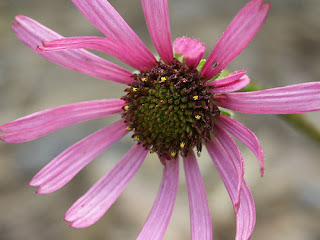The snow is snowing and the wind is blowing
But I can weather the storm!
What do I care how much it may storm?
For I've got my BOOK to keep me warm.
In 2010 I packed boxes and boxes of books... of all kinds...
novels, cookbooks, art books, gardening books and took them to second bookstore for some deniro.
The shelves are still full, but not overflowing.
What is there... is what I need and no more.
This holiday season, I was determined more than ever not to buy a single book. Inspite of myself, I caved. Those 10 best lists got to me. Dominque Browning's list pierced my heart, it was too much.
Here's what is going to keep me warm over Christmas and New Years and longer.
In the past year, I doubt I have opened a single cookbook. I googled recipes. Still, I bought David Tanis new book, Heart of the Artichoke for no good reason, except Tanis has stories to tell.
Ann Raver's article in The New York Times, Reining In a Runaway Yard chronicles the changes Page Dickey (70) and her husband, Bosco Schell (76) have made to their extensive garden. The article was an eye-opener, especially now that I see a new wrinkle everyday.
When I mentioned the Ann Raver article to Sean, a member of my hort crew, who is a knowledgeable plantsman and avid gardener himself; he told me when he bought his house, he inherited an "old people's garden". Where there had once been perennials, ground cover now grew. In the first years that he owned the place, he pulled out tons of ivy to make way for perennials, annuals, grasses, rare South African plants, bulbs, and flowering shrubs.
The aesthetics of old people vs. young peoples gardens is one to consider. Sydney Eddison apparently has given it a great deal of thought.
She knows about gardening and has written a book for those of us with a pain or two. Gardening for a Lifetime: How to Garden Wiser as You Grow Older seemed like a must-have.
The book lineup was increasing, but luckily I did not have to scratch
Apollo's Angels off the list. I was given it.
For years, I took ballet lessons from a Russian emigre, who was stuck in Queens teaching children ballet, instead of performing on the stage. She had a thick accent and was never in the mood for nonsense. She wanted us to become real ballerinas, although I am sure in her heart, she knew there wasn't collectively enough talent at the bar to make one ballerina.
Phyllis as Flower - Ballet Recital
All of this book buying had synchronicity to it. Morning Edition (NPR) was airing a series on reading and books. We all know about the demise of chain stores, declining revenues for publishers, shrinking readership and the ubiquitous use of e-readers. Nothing new here.
NPR identified two new trends, both entrepreneurial in nature. In the world of kids books: transmedia has taken shape. This is the linkage between book and website. The key to the popularity of these websites was summed up in the comments of its users: "while you are waiting for the next book, you can talk to the characters."
I've heard of artisanal bread, artisanal cheese, but i didn't know that the old-fashioned dying neighborhood bookstore has now been replaced by the artisanal bookstore.
There may be fewer book buyers in the world, but there are definitely a lot more writers.
2010 has been a year of finding out that friends,
and friends of friends,
and friends of friends of friends
are really good writers.
are really good writers.
IT'S AWESOME
I thank everyone who has read this blog
and
I thank every one of you writers for
the pleasure of reading what you have to say.
the pleasure of reading what you have to say.



























































 snap du jour (photo blog)
snap du jour (photo blog)




